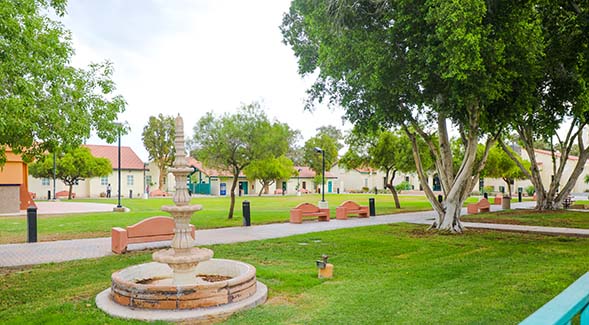State Budget Commits $80 Million to Bolster STEM Education, Research in Imperial Valley
A new facility at the SDSU campus in Brawley will support the regions burgeoning exploration of the extraction and uses of lithium.

San Diego State University Imperial Valley, its Brawley campus and the community they serve are newly poised for a dramatic expansion in STEM education and research, tying into regional plans for major economic development as California’s “Lithium Valley.”
Gov. Gavin Newsom on Thursday signed state budget documents for 2022-23 providing $80 million in state funding for a STEM facility on SDSU Imperial Valley’s Brawley campus.
Buoyed in the legislative process by strong local support and a prospect of public-private partnerships, the funding provides for the construction of a 65,000 square-foot facility at Brawley to house science, technology, chemistry, engineering and mathematics programming.
Imperial County officials were among many residents, businesses and public officials to applaud the budget action.
“Higher education is essential to providing a pathway to success for many in our community, and this $80 million in new funding will open even more opportunities by preparing and educating our local workforce for the much needed and good-paying jobs that will come from the development of Lithium Valley,” said Jesus Escobar, chair of the Board of Supervisors.
“On behalf of the County of Imperial, I’d also like to extend our thanks and appreciation to the SDSU administration and our state legislators who advocated for this community-driven funding request that will bring direct investments into our community, economy, and future,” Escobar said.
Town hall
SDSU President Adela de la Torre plans an Aug. 9 visit to Imperial Valley for a town hall to thank the community for its support for the STEM initiative, and to provide additional information on what to expect from it.
Plans call for 25,000 square feet for labs and core facilities with major instruments, to include space to collaborate with both public and private partners; 20,000 square feet of STEM-focused classroom and teaching laboratory space; and additional office space.
The funding ties into local excitement over prospects for extracting lithium, found underground near the Salton Sea and widely used in modern technology, as a powerful driver for the Imperial Valley economy. It plays an important role in electric power and creating rechargeable batteries designed for cars, mobile devices and energy-grid storage, making it an essential part of renewable-energy technology and of California’s net-zero emission goals.
Imperial Valley boasts one of the world’s largest known reserves of the light metal.
Future graduates of SDSU Imperial Valley will be prime candidates for the skilled lithium workforce, a statewide priority and part of a global transition to electric vehicles and other aspects of clean energy.
“The investment in the STEM building will have a lasting impact,” SDSU director of research initiatives for Engineering & Sciences John McMillan said in a talk at the Imperial Valley Economic & Energy Summit earlier this month. “Entrepreneurship will extend the benefit and create a lifetime of possibilities. It is not just economics; it is opportunity spread across the region.”
SDSU has already invested $15 million toward the plan and has expanded the range of new STEM degree programs and other offerings at SDSU Imperial Valley.



